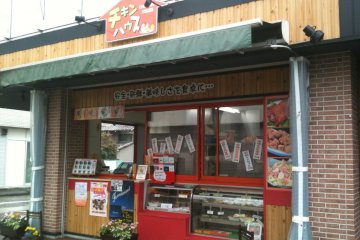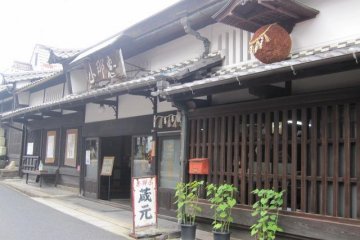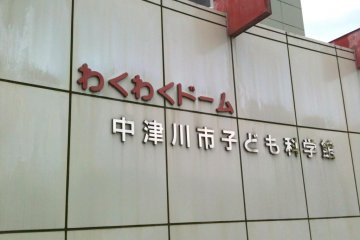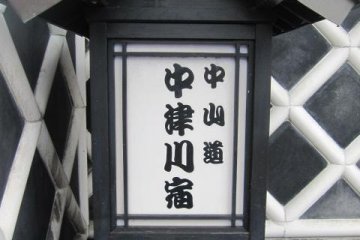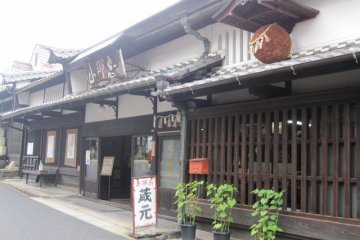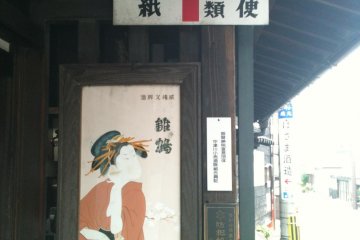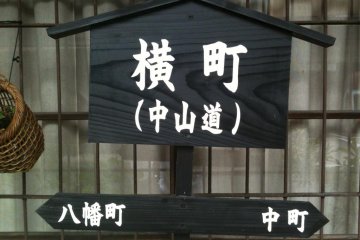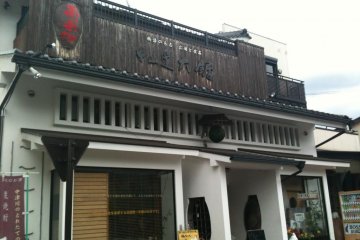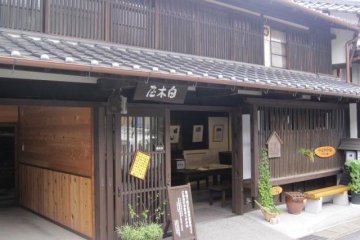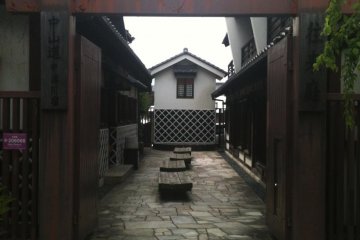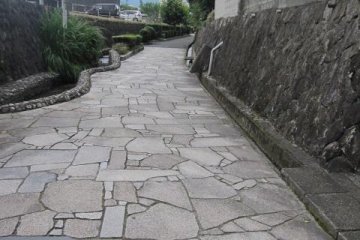During the Edo period, there were two major roads that connected Edo (Tokyo) to Kyoto; the Tokaido, which went along the coast, and the Nakasendo, which went through the center of Honshu. Along the Nakasendo were sixty-nine station where travelers could rest, restock and conduct business. The forty-fifth station was Nakatsugawa-juku which gradually became the city of Nakatsugawa.
Though much of the Nakasendo has become major roads and highways and the Jukus have become modern cities, some areas have been preserved along the route. Nakatsugawa-juku is a hodgepodge of classic Edo period Udatsu houses and store fronts and 1960s concrete block businesses giving a feeling of time distortion with every step.
My exploration started by parking my car at a local park and walking up to Nakatsugawa-bashi, which traditionally was the entrance to the town. Hiroshige, the famous Edo Period ukiyo-e artist, made two prints of Nakatsugawa-juku in his series “Stations of the Kiso Kaido”; the name of the road before it became the Nakasendo. One of the 71 prints he made with Keisai Eisan was of people crossing a bridge going into Nakatsugawa-juku. The current bridge was built after World War II, but I imagined that I was walking in his footsteps as I crossed into the Juku.
Though the first buildings were definitely not Edo period, they dressed their store fronts to seem Edo-esque. Every few meters there were small lanterns stating the districts; “Shitamachi”, “Yokomachi”, “Nakamachi” and “Honmachi”, to name a few. I soon came across the Hazama Sake Brewery, an udatsu style building graced by a traditional ball made of cedar bark called a sugidama, which tells people that a new sake has been brewed and ready for purchase.
The road was narrow yet cars came and go, slowly passing by as the drivers bowed to each other. I turned a corner to discover a house with a small museum-like room featuring photos of the houses and businesses of the area. Though the photos and descriptions were all in Japanese, it helped identify the more important buildings and aspects of the area.
I ventured past a Japanese sweet shop called Kawakamiya specializing in chestnut based delights, and another sake brewery and store called Ohga featuring a massive selection of sake, beer, wine and liqueurs. Across the street from Ohga were more udatsu style buildings and some more modern buildings designed to fit with the surrounding image.
The Nakasendo is an important part of Japanese history. You can explore this history in the Nakasendo Historical Materials museum. Housed in the remodeled NTT building, this museum has documents, paintings and other materials documenting the history of the Nakasendo. Most of the content is in Japanese but the photos and paintings can help tell the story.
Further down the road in Shinmachi was a garden dedicated to the juku’s history and another sweets company called Suya. With the sun setting and dark clouds starting to mask Mt. Ena, I returned to my car on the path I had come; a path that could take me all the way to Kyoto.



